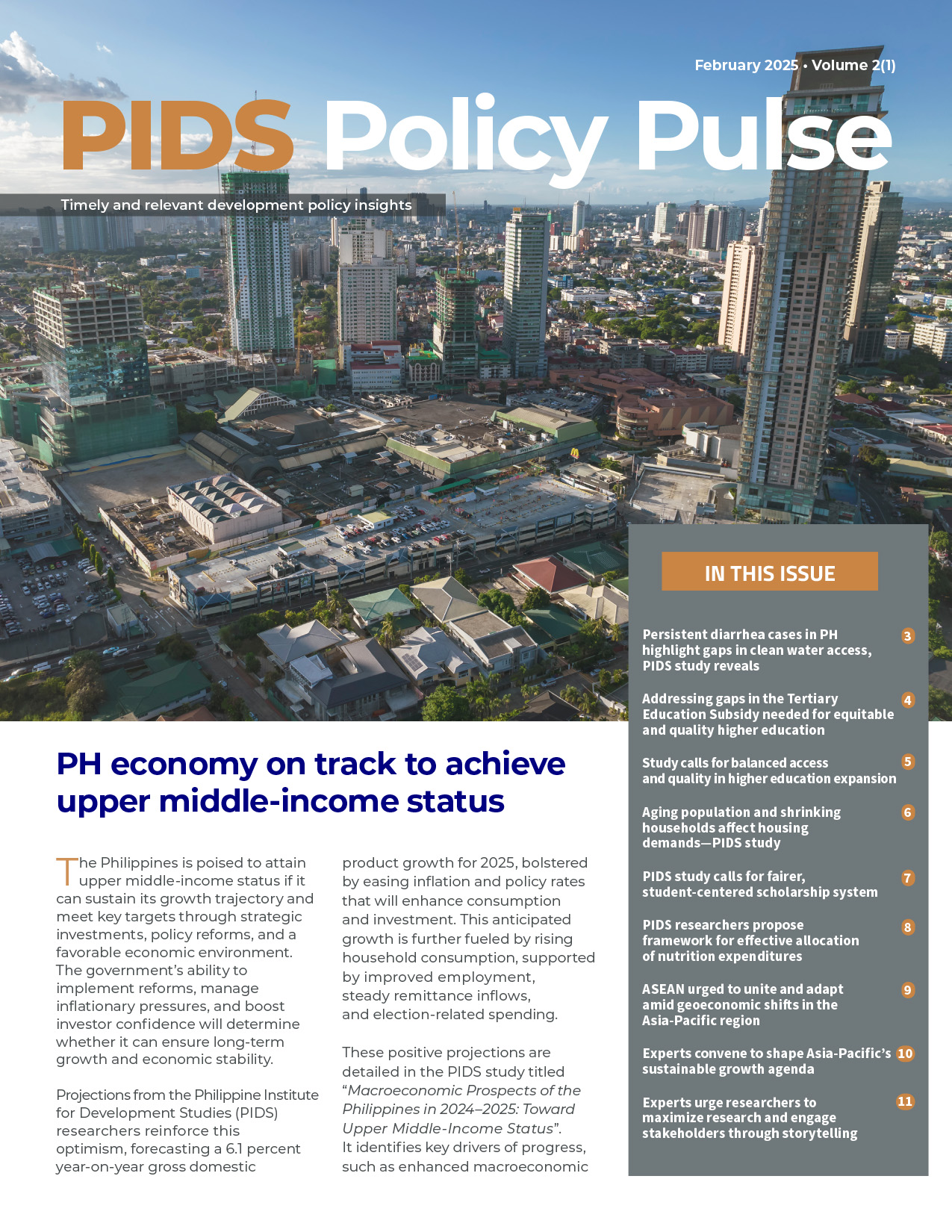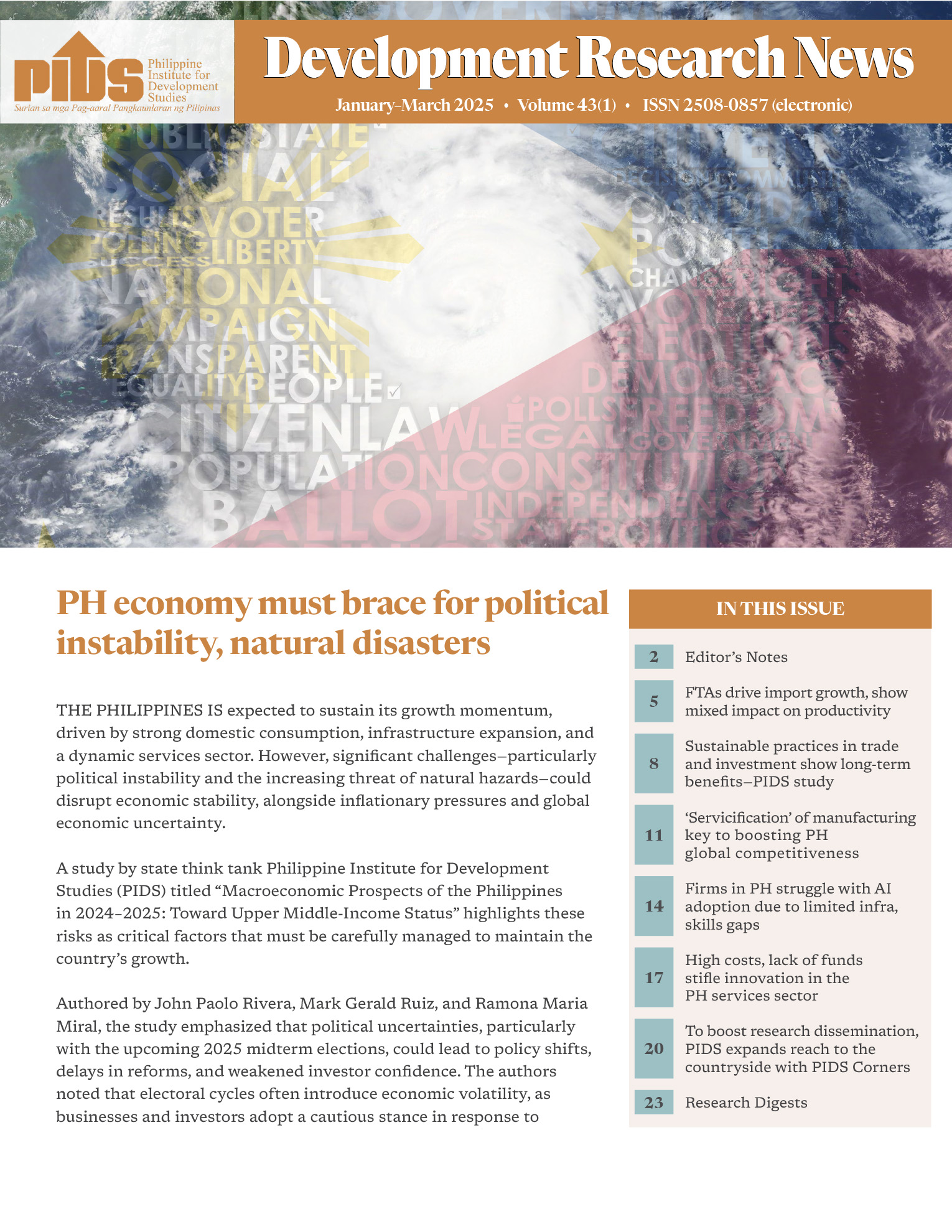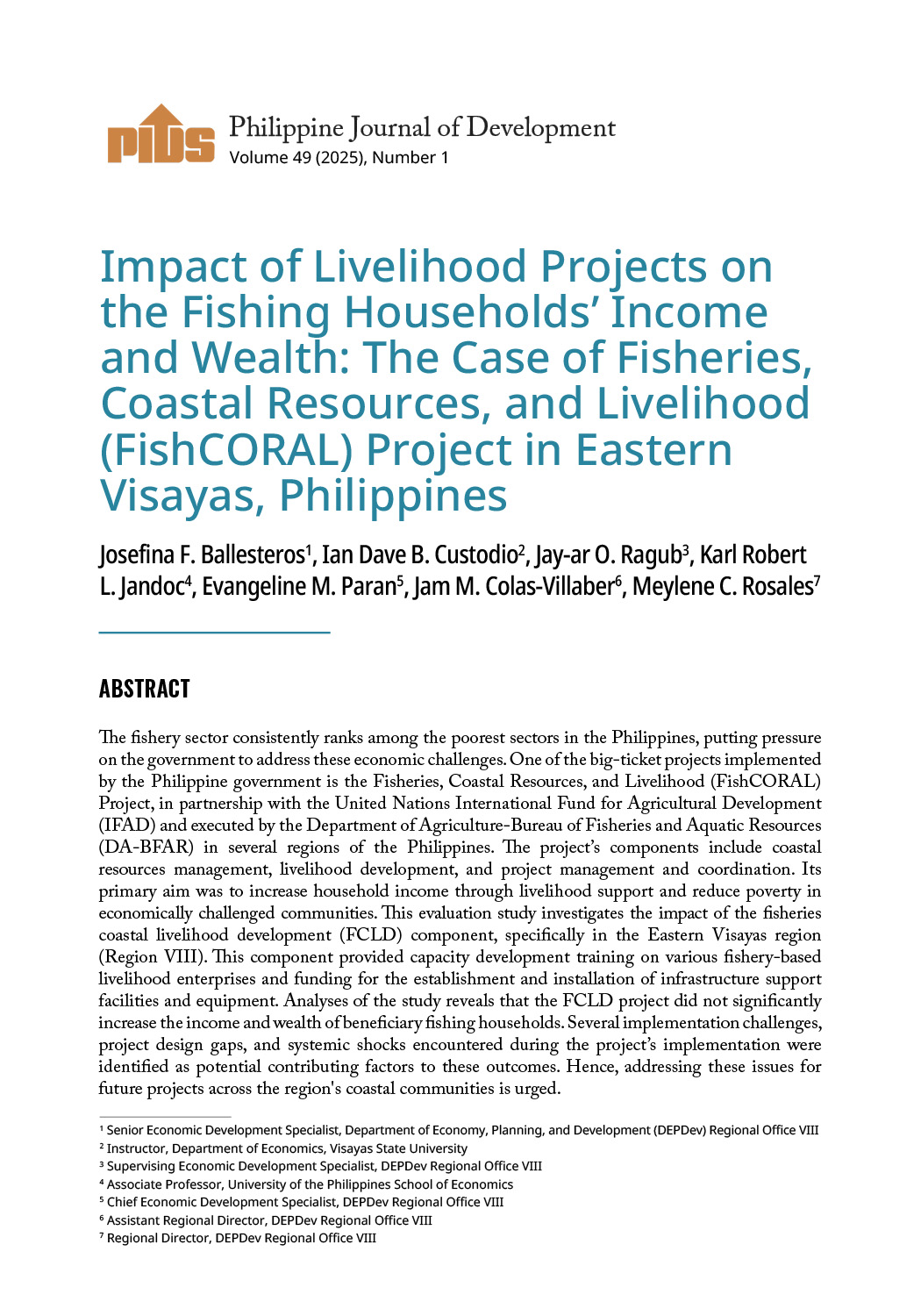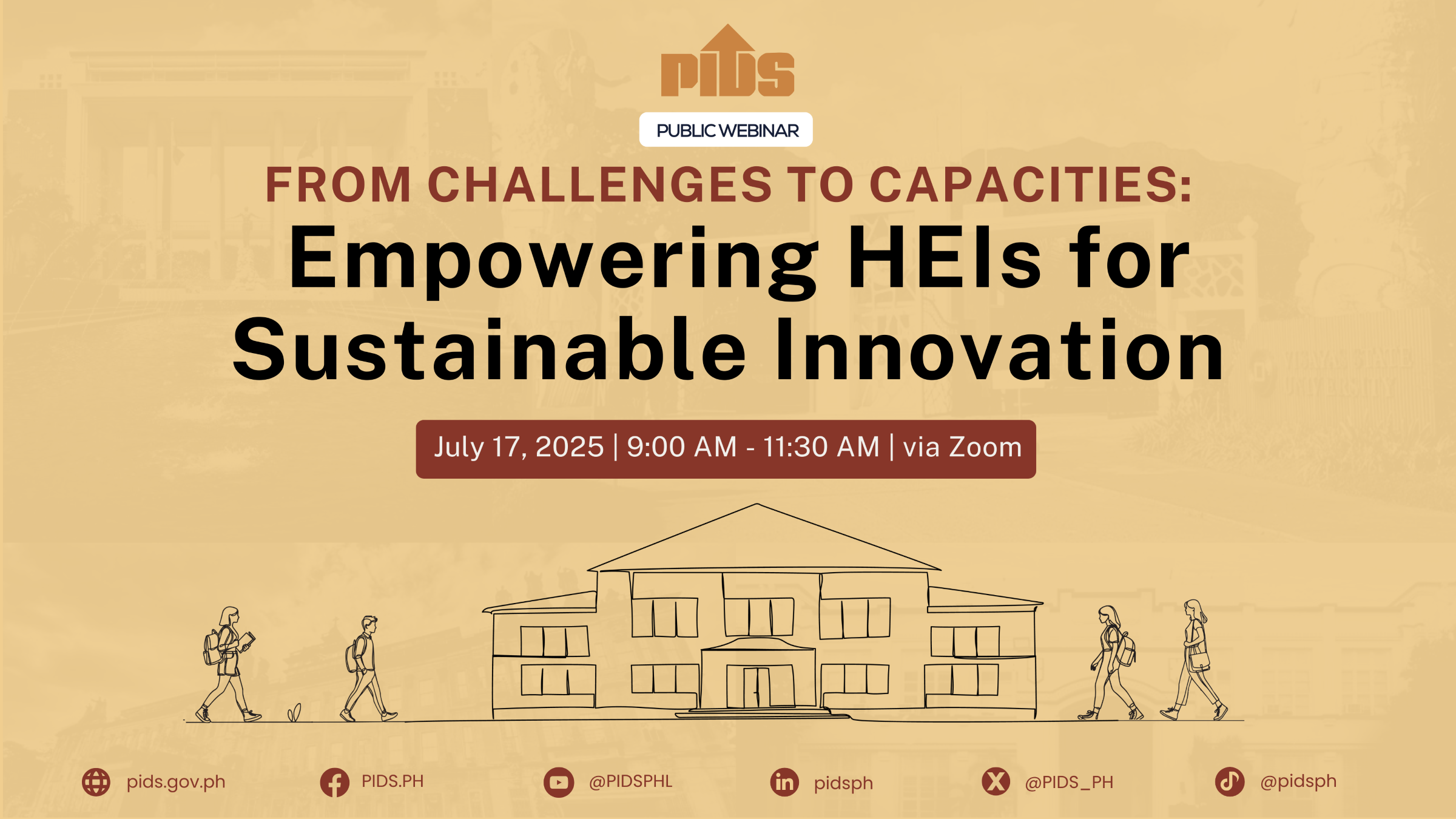THE design of crop insurance policies is geared towards reducing the risk to farm lenders rather than protecting farmers from risk, the Philippine Institute for Development Studies (PIDS), a government think tank, said in a Policy Note.
In a note, “Design issues of the Philippine agricultural insurance programs,” authors Celia M. Reyes and Christian D. Mina said insurance cover for farmers is typically tied of the size of their loans, which is often less than the total cost of inputs.
“As such, insurance (provided by the) PCIC (Philippine Crop Insurance Corp.) appears to be serving more as a credit risk reduction tool by design than a risk mitigation tool.”
Lending institutions, as a matter of credit policy, typically set the size of their loans at less than the value of the underlying asset, in order to protect the institution against sudden swings in asset value while ensuring that the borrower puts in some capital of his own, which serves as an incentive to servicing the loan properly, because a loan default also means the borrower loses the capital he put into the asset.
The policy note said PCIC is also focused on covering rice and corn farmers while coconut and banana farmers, in a survey, said coverage was inadequate. It said in 2015, rice farmers with insurance cover inadequate to compensate for per-hectare production costs was 84%.
It said in the case of government insurance programs like the Department of Agriculture (DA) Weather-Adverse Rice Areas (WARA), the DA-National Irrigation Administration (NIA) Third Cropping initiative, and the Registry System for Basic Sectors in Agriculture (RSBSA)-Agriculture Awards Program (AIP), coverage is as low as P10,000 per hectare in the case of the first two and P20,000 for RSBSA.
It said government programs set lower coverage amounts to cover more beneficiaries with limited budgets.
It added that claims on insurance are also an issue, with coconut farmers in the Southern Tagalog provinces able to make a claim only when trees are felled, not when yields drop.
“Even without tree felling, natural calamities often cause heavy damage to coconut trees, leaving trees unproductive for over a year,” it said.
It said PCIC does not currently cover risks from wind not caused by typhoon, accidents and livestock or poultry diseases, and pests.
The authors recommended that coverage limits be raised to compensate farmers for their production costs “at the very least,” while engaging local governments to shoulder some premiums.
They also recommended changes to the premium structure to charge different rates to subsistence farmers and more commercial operations, adding that the PCIC should remove its bias towards rice and corn, with premium subsidies extending to growers of high-value crops.












